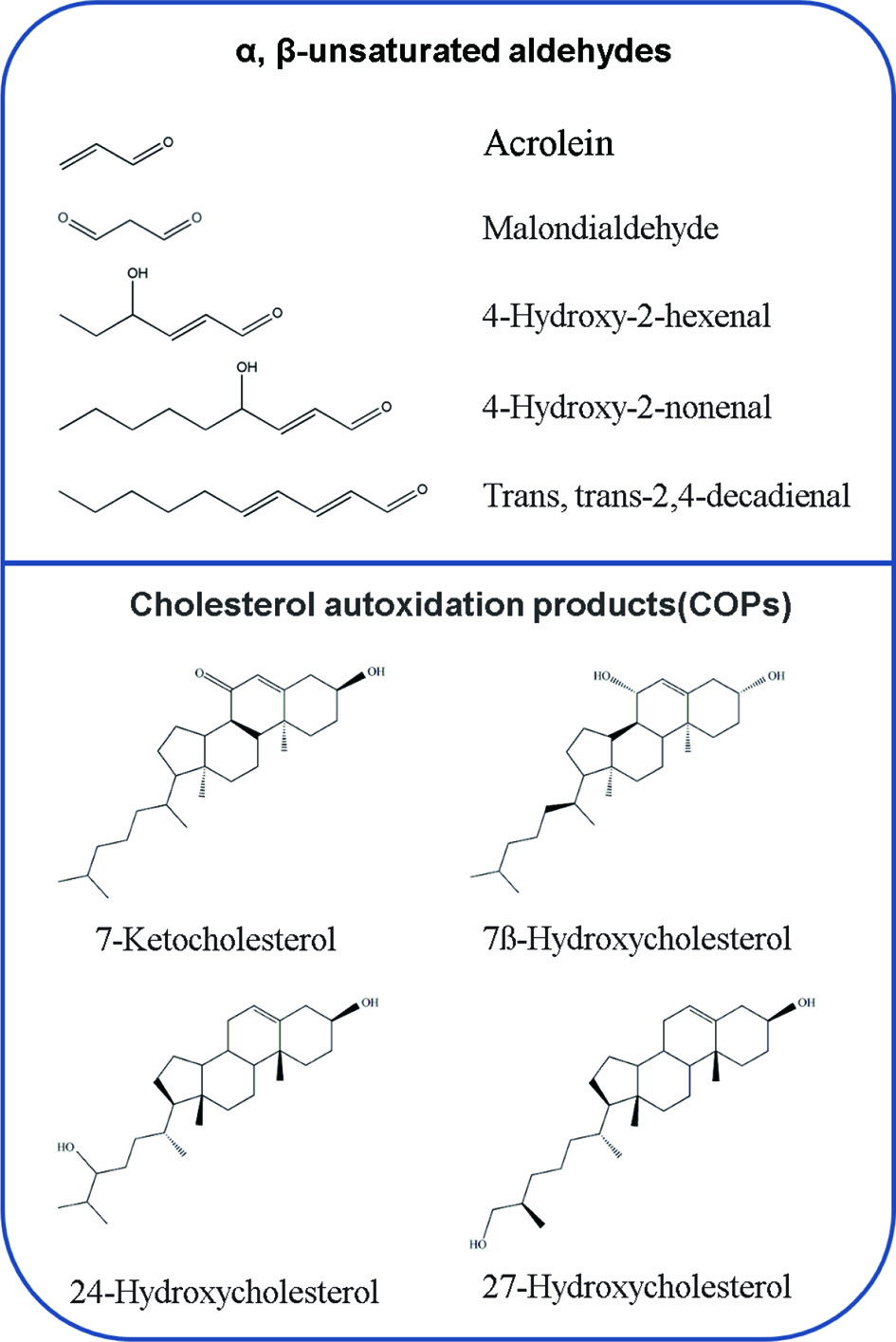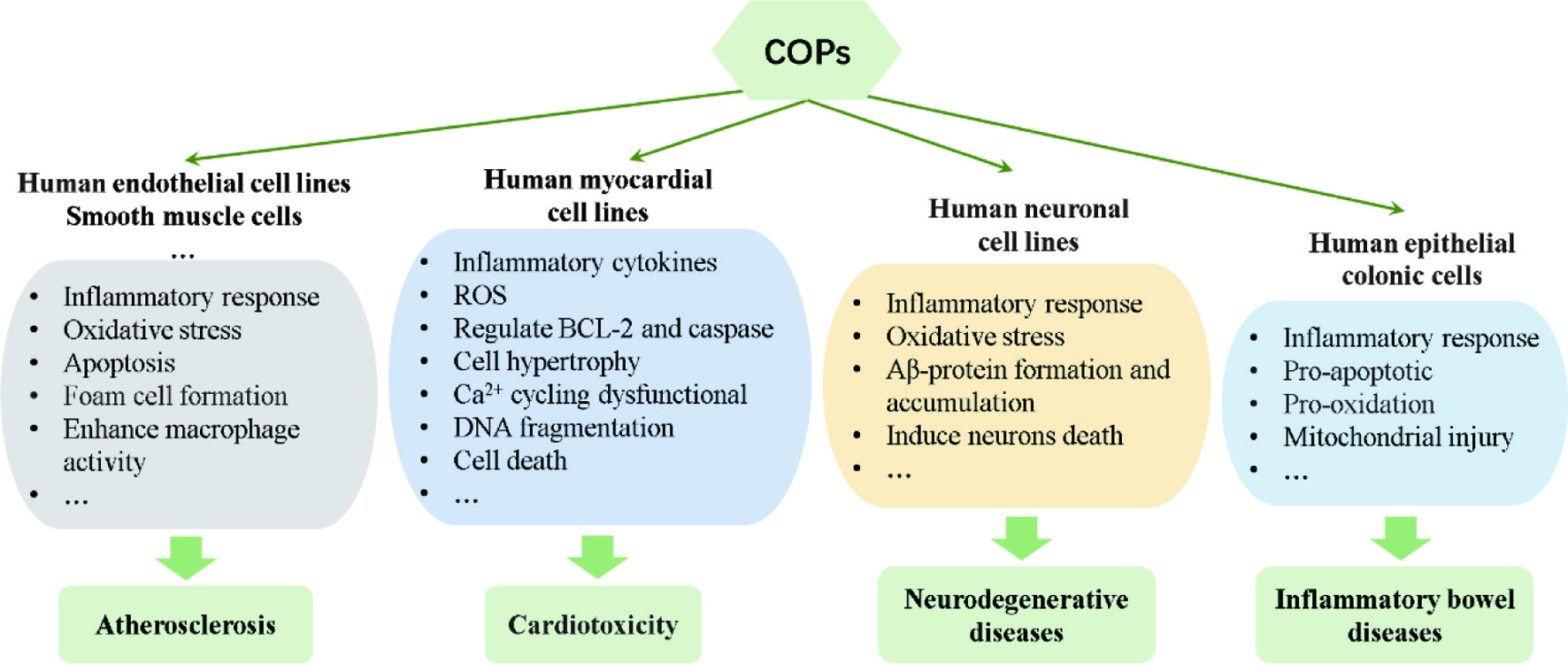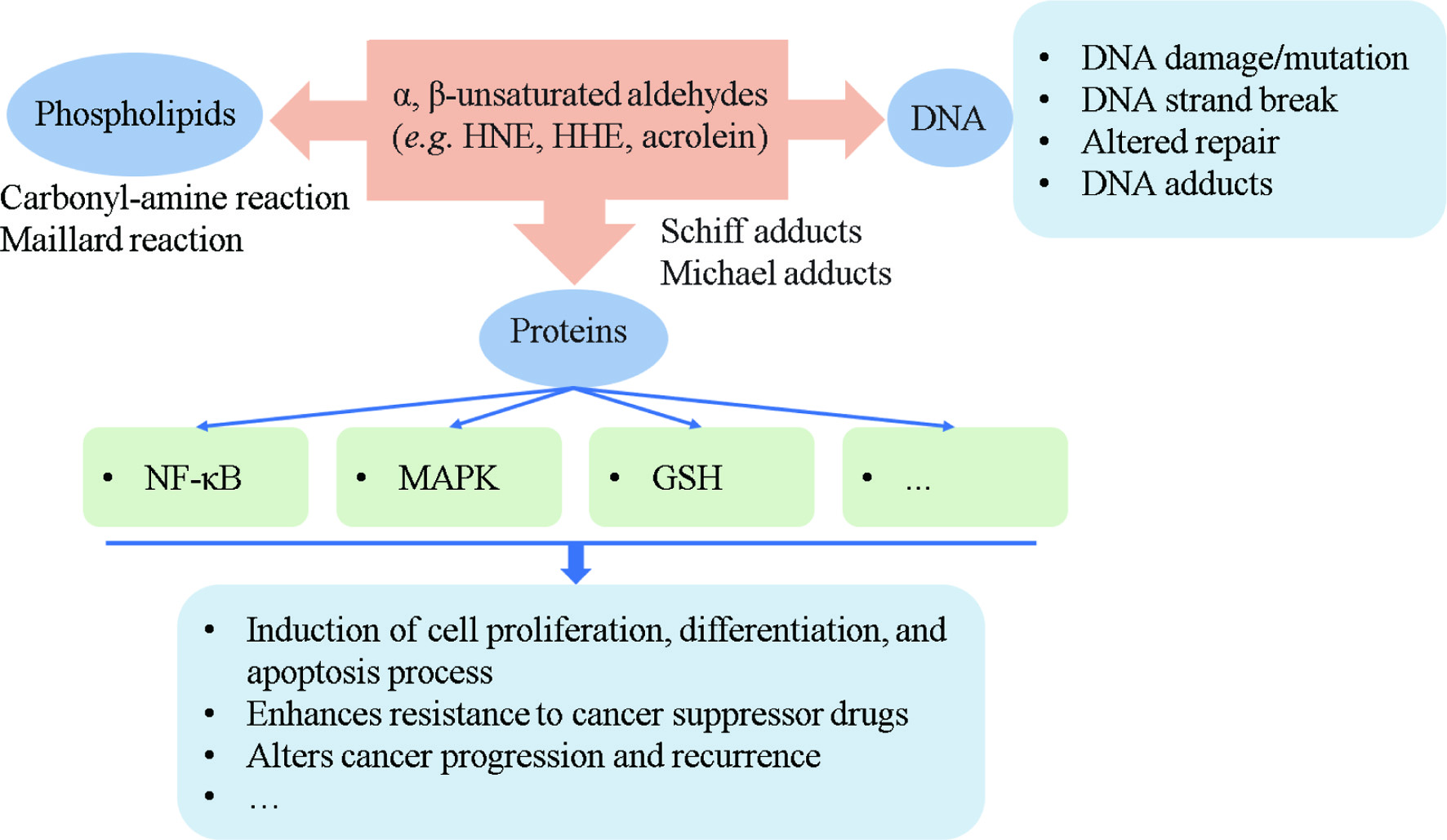
Figure 1. Examples of chemical structures of the lipid oxidation products (LOPs).
| Journal of Food Bioactives, ISSN 2637-8752 print, 2637-8779 online |
| Journal website www.isnff-jfb.com |
Review
Volume 15, September 2021, pages 51-62
Potential adverse health effects of dietary lipid oxidation products
Figures



Table
| Aldehyde | Experimental model | Dose/ Concentration | Time | Effects | References |
|---|---|---|---|---|---|
| Cardiovascular diseases | |||||
| Atherosclerosis | |||||
| Acrolein | ApoE-/- mice | 2.5 mg/kg/day | 8 weeks | Increased lesion formation in the aortic valve and aortic arch, elevated concentrations of cholesterol and platelet factor 4 levels in the plasma, macrophage accumulation, and the abundance of small and medium VLDL particles. | Srivastava et al., 2011 |
| Acrolein | C57BL/6 mice | 5 mg/kg/day | 24 h after exposure | Increased plasma cholesterol, triacylglycerols, and VLDL, and decreased hepatic lipase activity and hepatic lipase expression. | Conklin et al., 2010 |
| Acrolein | ApoE-null mice | 0.05–1 mg/kg/day | 8 weeks | Few hepatic genes were dysregulated that involved with lipid synthesis and trafficking and APR. | Conklin et al., 2011 |
| Acrolein | ApoE-/- mice | 3 mg/kg/day | 1 month | Increased serum and aortic cholesterol, triglycerides, and lipid peroxides; Increased intracellular oxidative stress and over-expression of key regulators of cellular lipid biosynthesis: SREBPs, HMGCR, and DGAT1. | Rom et al., 2017 |
| Oxidized cholesterol | ApoE mice/ LDLR-deficient mice | Diet containing 5% oxidized cholesterol | 4 months/ 7 months | Increased aortic lesions by 38% and 32%, respectively. | Staprans et al., 2000 |
| Oxidized cholesterol | Rabbits | Diet containing 0.33% cholesterol of which 5% was oxidized | 12 weeks | Increased fatty streak lesions in the aortas by 100%. | Staprans et al., 1999 |
| Oxysterols | Golden Syrian hamsters | Diet containing a mixture of oxysterols | 3 months | Induced vascular wall thickening, endothelial damage and smooth muscle cell proliferation and migration. | Meynier et al., 2002 |
| Diabetes mellitus | |||||
| 4-HNE | Gastrocnemius muscles isolated from CD-1 Swiss mice | 100 μM | \ | Decreased insulin signaling and insulin-induced glucose uptake in muscle. Impairs insulin action by inducing oxidative stress and oxidative damage to proteins. | Pillon et al., 2012 |
| 4-HHE | Wistar rats | 10 mg/kg | \ | Induced insulin resistance, altered whole-body insulin sensitivity and decreased glucose infusion rate; abolished insulin induced phosphorylation of Akt in skeletal muscle. | Soulage et al., 2018 |
| Hypertension | |||||
| tt-DDE | SD rats | 500 mg/kg | 28 days | Induced blood pressure elevation and endothelial dysfunction by oxidative/nitrative stress and apoptosis. | Hu et al., 2020 |
| Cardiotoxicity | |||||
| Acrolein | ICR mice | 5 mg/kg | \ | Exacerbated myocardial ischemic injury and blocked NO-induced cardioprotection via disrupting PKC signaling. | Wang et al., 2008 |
| Acrolein | Sprague Dawley rats | 5 mg/kg | 30 days | Induced cardiac injury, and dysfunction in mitochondrial bioenergetics of heart by decreasing levels of oxidative phosphorylation enzymes, tricarboxylic acid cycle enzymes and ATP. | Aydın et al., 2018 |
| Neurodegenerative diseases | |||||
| 4-HNE | Sprague–Dawley rats | 3 mL/kg/day | 21 days | Induced disruption of survival signaling of frontal cortex cholinergic neurons. | Zárate et al., 2009 |
| Acrolein | Wistar rats | 2 mg/kg/day | 90 days | Induced histopathological changes of brain tissues and neurofilament accumulation. | Selmanoğlu et al., 2018 |
| Acrolein | Sprague-Dawley rats | 2.5 mg/kg/day | 12 weeks | Induced cognitive impairment and pyknosis/atrophy of hippocampal neurons by inducing oxidative damage and changes of APP, β-secretase, α-secretase and receptor, and activating astrocytes, regulating BDNF/TrkB pathway. | Huang et al., 2018 |
| Gastrointestinal diseases | |||||
| 4-HNE | Wistar rats | 0.26 μM | \ | Induced peptic ulcers and reduced the GSH content in the endoplasmic reticulum. | Jayaraj et al., 1986 |
| Acrolein | Wistar rats | 6 mg/kg | 70 days | Induced erosion, hyperplasia and hyperkeratosis in the glandular mucosa of the stomach or in the forestomach. | Gomes et al., 2002 |
| tt-DDE | F344/N rats; B6C3F1 mice | 800 mg/kg | 3 months | Induced forestomach ulceration and diarrhea. | Chan, 2011 |
| tt-DDE | Sprague Dawley rats | 50 or 100 mg/kg | \ | Inhibit gastric emptying rate in rats through inducing cholecystokinin secretion. | Hira et al., 2015 |
| Acrolein | ApoE-/- mice | 3 mg/kg/day | 1 month | Induced a major shift in the gut microbiota composition in including a significant phylum-level change with increased Firmicutes and decreased Bacteroidetes. | Rom et al., 2017 |
| Carcinogenicity | |||||
| tt-DDE | CD-1 (ICR) mice | 8 or 24 mg/kg | 8 weeks | Increased the number and types of cells in the bronchoalveolar lavage fluid; Induced pathological changes, and inflammatory gene modulations in the lung tissues. | Wang et al., 2010 |
| tt-DDE | ICR mice | 24 mg/kg | 8 weeks | Induced lung lesions and changes of amino acid profiles in the urine and serum. | Lin et al., 2014 |
| MDA | Swiss mice | 0.1–10 μg/g/day | 12 months | Increased the total neoplasms and neoplastic lesions in the liver. | Draper, McGirr, and Hadley, 1986 |
| Mutagenicity | |||||
| \ | \ | \ | \ | \ | \ |
| Hepatotoxicity | |||||
| 4-HNE | Sprague-Dawley rats | 0.5, 2.5, or 12.5 mg/kg | 28 days | Induced significant alterations in hepatotoxicity biomarkers, such as serum albumin, serum total bilirubin, and AST activity. | Kang et al., 2011 |
| Acrolein | Wistar albino rats | 4 mg/kg | 7 days | Induced liver tissues apoptosis, dilatations in the perinuclear space, and cytoplasmic vacuolization. | Gökçe et al., 2020 |